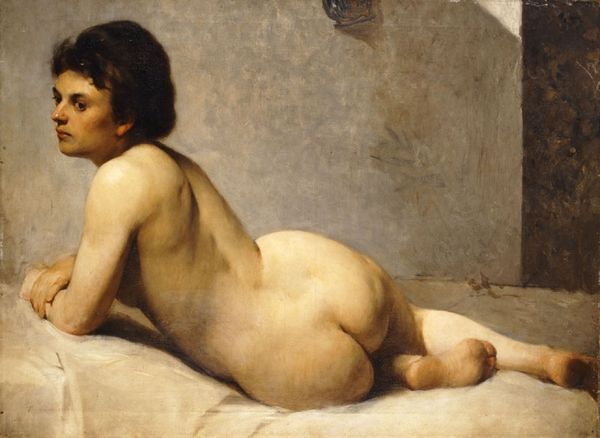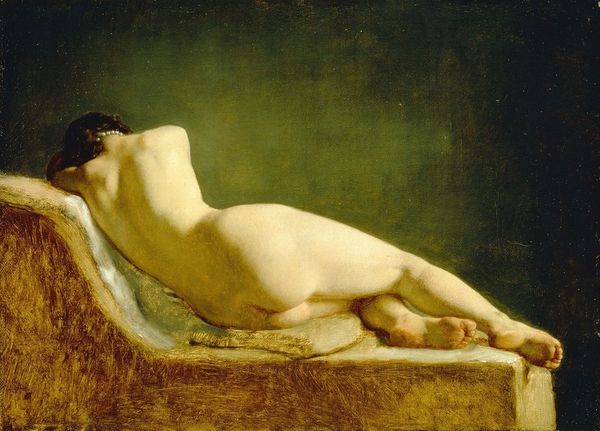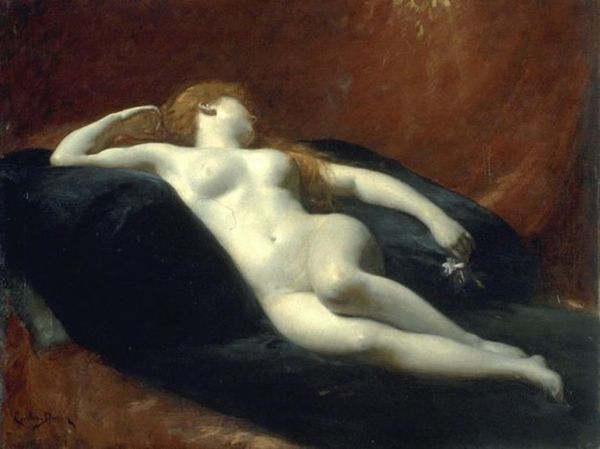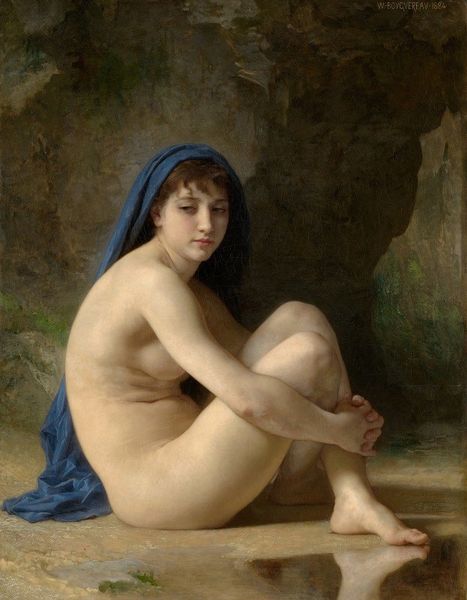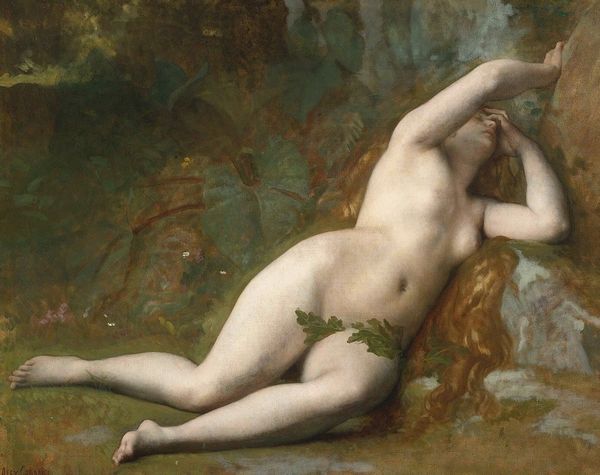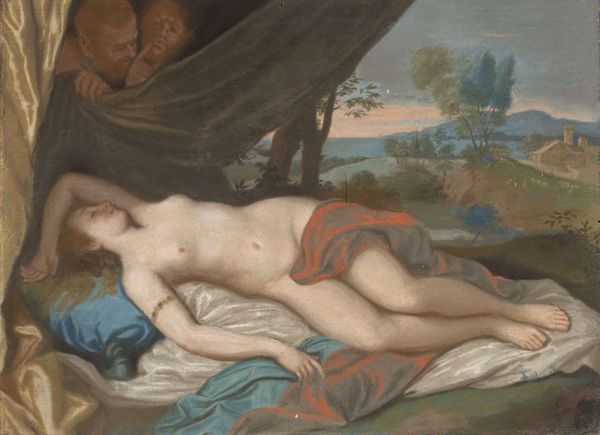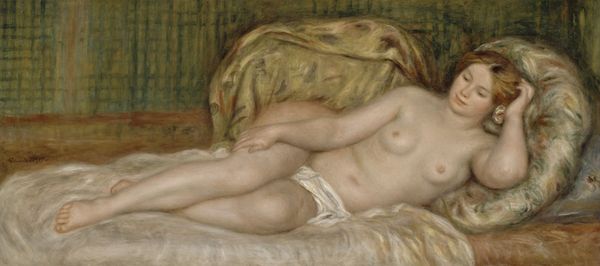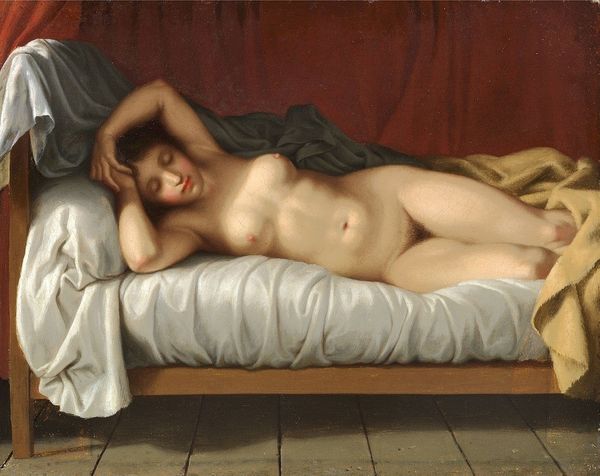
painting, oil-paint
#
painting
#
oil-paint
#
romanticism
#
genre-painting
#
academic-art
#
nude
#
erotic-art
Copyright: Public Domain: Artvee
Editor: Here we have William Etty's "Reclining Nude," an oil painting from the Romanticism movement. The flesh tones and pose are striking. What are your initial thoughts on the context of its creation? Curator: As a materialist, I immediately consider the physical reality of this work: the ground pigments, the linen support, the probable use of lead white creating the luminescent flesh. The accessibility of these materials and the artist's relationship to the market – did Etty rely on wealthy patrons or public exhibitions for income? These factors would greatly affect the creation of a piece like this. Editor: That's a fascinating angle. I hadn’t considered the economic factors. Do you think Etty's position in society influenced his choice of subject matter, and whether or not that should be described as “erotic art”? Curator: Absolutely. The male gaze and its potential market are key considerations. Nudity had long been a part of the art world; but if the artist was making a pointed statement by centering his attention on a reclining nude for the public? What was the relationship between artistic skill, commercial success and the societal objectification of women that supported it? That is what I'm interested in. What processes allowed this painting to be not just conceived, but realized and, further, appreciated, or perhaps even critiqued. Editor: So, beyond just admiring the aesthetic qualities, you’re pushing us to think about the socio-economic structures that made it possible and its function within them. Curator: Precisely. It's not about dismissing the artist's skill, but understanding it within a broader context of production and consumption. Editor: That gives me a lot to consider! I'll never look at a "nude" quite the same way again. Curator: Good! Consider that next time you walk through a gallery or museum.
Comments
No comments
Be the first to comment and join the conversation on the ultimate creative platform.
